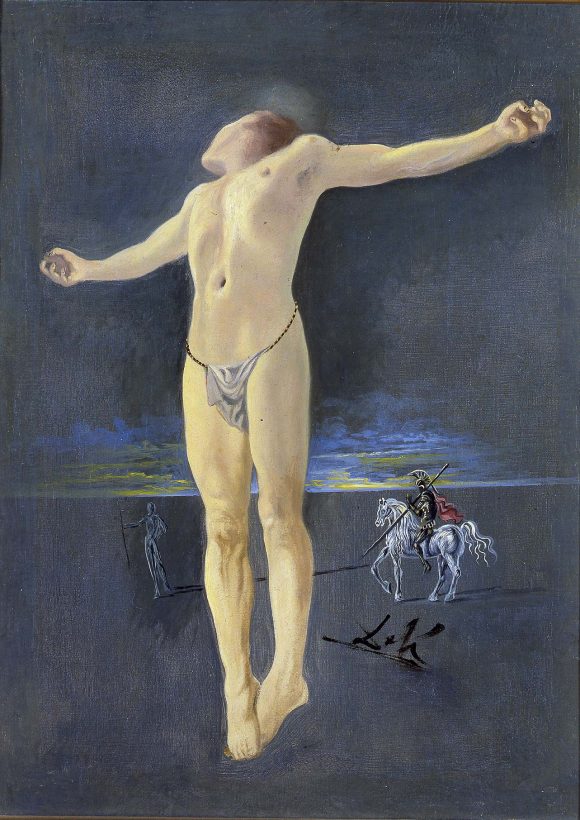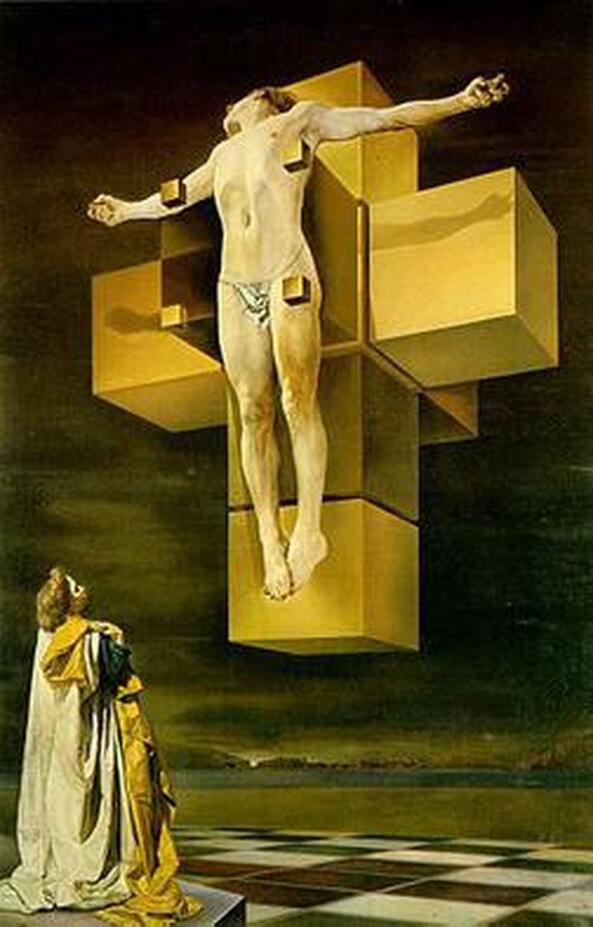Despite the presence of these weapons, Jesus’s body shows no signs of injury or abuse. The nail marks on the hands and feet are absent, as is the crown of thorns. Jesus is turned away from the viewer, leaving His face unseen.
The painting is housed in one of the only parts of the Vatican Museum that does not perpetually throng with teeming masses of people, which allowed me to study the image for a while before moving on.
In that brief time, I concluded that I liked Dali’s representation of an unmutilated Christ crucified in empty space because the absence of the cross invited me to think and perceive the crucifixion from entirely new and unexplored perspectives. At the same time, I could not shake the feeling that I had seen this image somewhere before.
Shortly after arriving home, I discovered the source of my familiarity with Crocifisso. The image is a study for Dali’s famous Crucifixion (Corpus Hypercubus), which I had seen more than a decade ago in New York’s Metropolitan Museum of Art.
I distinctly remember not liking Dali’s Crucifixion (Corpus Hypercubus) all that much, which makes my esteem for the minimalistic study for that painting all the more puzzling.



 RSS Feed
RSS Feed

